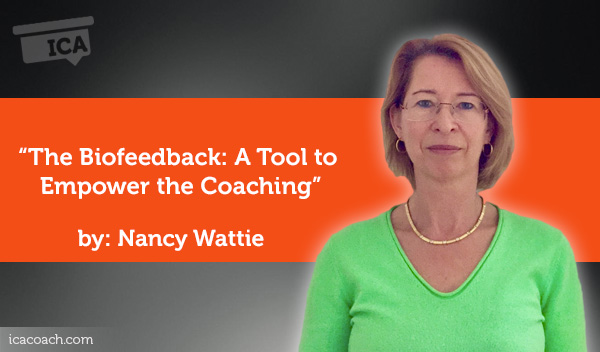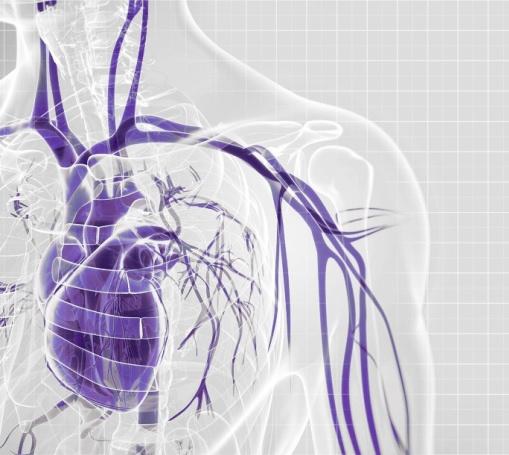
Research Paper By Nancy Wattié
(Life Performance Coach, FRANCE)
Introduction – What is Energy Kinesiology?
The muscular test is the essential actor of one of the fundamental principles on which kinesiology is based. It responds to well-defined laws and principles. It is therefore important to know how it works by having acquired basic skills in either neurotherapy or kinesiology. Learning to test muscles is an art and technique that applies to any muscle in the body. The kinesiologist prefers some to test according to the physical abilities and the imbalance at play in the person to be tested.
This test is not the monopoly of kinesiologists. Some health professionals use it in the exercise of their activity: doctors, homeopaths, posturologists, chiropodists, speech therapists, dentists, chiropractors, osteopaths, and coach!
Muscle testing is about assessing a muscle’s tone by putting light pressure on the contraction while testing for a possible stressor; which can be an emotion, an attitude, a situation, a movement, or a body position. The tester must first make sure of several factors: the reliability of the tone of the same muscle, its position relative to the person tested, its listening ability, the level of hydration, a possible inversion in the response mode, surrounding energy parasitics, etc. This is called “pre-testing”.
Stress release is the fundamental principle of a kinesiology consultation and biofeedback is the basic tool. The muscular test is an instrument that can detect blockages that prevent to achieve its full potential, to achieve its objectives. The importance of a good defined “agreement” is one of the fundamentals in coaching. Detecting blockages that would prevent the client from achieving the stated goal is therefore an essential phase that would allow us to waste time, take a wrong way or simply be completely out of the agreement. It is at this stage of coaching that the “Biofeedback” tool can complete our intervention tools.

Discovering of the muscle testing
In the United States, the first observations in terms of muscle testing date back to Dr. R. Lovett in 1912, then to physiotherapists; Henry and Florence Kendall in 1949. In the years sixties, Doctor Georges Goodheart, chiropractor, develops on the basis of the muscle test of these new concept called Applied Kinesiology. His collaborator, Dr. John Thie, democratized this concept in the 1970s by creating the “Touch for health”, which will be the basis of the whole building of modern kinesiology. Today this precision test goes well beyond the mere quantitative aspect of its origins and is based on the neurological functional muscle assessment.
Definition & Muscle Testing Principles
Basics:
So the muscle testing has his roots in Kinesiology mostly called Applied Kinesiology. The practice is still evolving. More and more we can also read “Energy Kinesiology”.
In 1964, Dr. Goodheart evolved the principle by discovering a new way to use muscle tone tests. He correlated the relationship between internal organs, acupuncture meridians, and skeletal muscles. Acupuncture meridians are channels that ensure the circulation of energy in the body.
This principle has been used in Traditional Chinese Medicine (TCM) for over 2200 years. He realized that the skeletal muscles not unlike acupuncture meridians also were a way to monitor internal function and reflects the state of functioning of our entire body. His research has shown that in a standard state, a disharmonious, in deficit, or overloaded meridian (TCM) gives a “weak” tonicity to the solicited (or tested) muscle. Conversely, a harmonious meridian gives a “strong”, or resisting tone effect.
The emotional state of a person directly affects the state of his meridians and can disrupt their balance. It is therefore very easy for the body to express its perception of good or bad emotion. If necessary, the use of biofeedback gives us a reading, an additional listening.
This means that by questioning the body via biofeedback, one obtains the physical, bodily and unconscious opinion of the person. If the body is good with the question; the muscular test will answer “strong” and if it is not well with the question; he answers “weak”.
Biofeedback can also question cellular memory (the past) but not what is to live (the future). On the other hand, he can give his emotional opinion on the current idea, present, of a future imagined situation.
Thus, this method, when properly applied, is an efficient tool of return of the nerve impulse (biofeedback) which makes it possible to identify the origins of an imbalance and to act on the cause of the problem without being limited to the manifestation of this same problem. Biofeedback focuses on treating the cause of health problems, rather than treating symptoms.
This is where the tool joins the principles of coaching; namely: “we coach the customer, not the situation”. The person tested feels the changes in their body’s response and thus becomes aware of the origin of their problems. Various corrections proposed to the Corps will lead to the reduction of Stress, and thus allow the person to step back and choose the solution that seems best suited.
As a result, this tool is incompatible for testing non-verifiable situations, or for guiding personal choices. Decisions only go to the person himself, who retains his freedom of choice. The practitioner (or tester) can not venture to “interpret”. Only the person who is tested is able to participate actively in their personal process. This ideological conception is still a link with our coaching principles: the responsibility of the client in the face of his commitment!
Instructions:
This muscle test consists of placing a muscle in a contraction position and exerting a slight pressure to try to make it leave this position. The most used muscle is the anterior deltoid. It is the muscle that raises the arm forward, positioned at an angle of 30 °, the palm down, and the elbow stretched. Pressure is exerted on the back of the wrist to bring the arm down the body. Personally, I prefer to use the medium deltoid, heavier and more obvious to test. It is quite feasible to do the test on oneself when one has learned to feel the muscular response. Technically all so-called “external” muscles are testable. Lately and by the evolution of the consultations “online”, the use of the muscular test with the fingers of the hands, is more and more current.
Warnings:
Depending on the person tested, the difference between the reaction of a muscle that reacts “strong” or “weak” is very clear. And for others, the muscular response will be very light, very subtle. It often happens that in doubt, the tester asks his client as he felt his muscular reaction. This tester attitude again reveals the importance of customer responsibility.

Using of the Biofeedback: How the Biofeedback from Kinesiology meets the Coaching?
In kinesiology, the muscular test is the tool of investigation, the evaluation of the muscular force is not the priority. Throughout the many tests, the body tells its story, tells us its needs, the new options to operate, the priorities to be respected, the attitudes to use, etc.
The purpose of the muscle test is not to make a diagnosis of the person’s state of health, to test drugs, to predict the future or to reveal information that is foreign to the person. Not doing any diagnosis or interpretation, the kinesiologist and the coach are not therapists. They are facilitators, translators, accompaniers in relation to the responses of the body and the person. Recall that these answers come from the unconscious of the person tested. Kinesiologists registered with the SNK (National Union of Kinesiologists) and certified coaches commit themselves to respect a code of ethics. For more information about kinesiologists and the use of muscle testing see: . https://www.kinesuisse.ch/home/
To summarize, the test allows to:
Conclusion
Biofeedback is the process of seeing a real-time physiological transformation happening within your body. Seeing and feeling real-time results reinforces the awareness of our commitment responsibility.
Biofeedback is becoming increasingly popular in coaching. Biofeedback offers objectives parameters and insights into disbalances in physiology as a result of stress. By showing typical physiological stress parameters and disbalances clients gain better insight in their triggers and create techniques to better cope with them. Biofeeback and neurofeedback give the individual power over his physiology, biology and emotions.
Biofeedback has its limits. Since the brain does not distinguish between the real, the symbolic, the imaginary or the virtual, the muscular responses must be received with caution. The muscular test is based on the feelings, the reactions of the person to a given situation and not on the situation itself. This is the way the person sees themselves and reacts to a situation or their environment. The tester works objectively on subjectivity and not on objectivity. The muscle test is a stress detector and not a truth detector.
The tester is the “sounding-board” of responses from the unconscious of the person tested. This Biofeedback is such as the compass of the explorer.

Some reference works:
John & Matthew Thie : « Touch for Health : The complete Edition » « La Santé par le toucher » – French Version Edition Tredaniel Charles Krebs : « A Revolutionnary Way of Thinking » « La kinesiology selon le Dr. Charles Krebs; une conception révolutionnaire » – French Version Edition Résurgence Wayne W. Topping: “Success Over Distress” – Topping International Institute Nancy Wattié #LadyVitality – Nov 2018 certified: TFH Pro and Stress Release